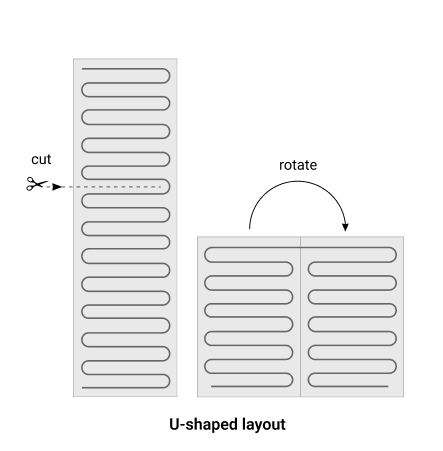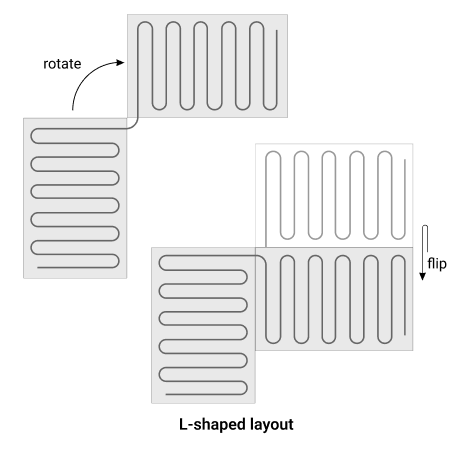How to lay an underfloor heating mat: 10 proven tips
Heating mats are available in various power levels, giving you the flexibility to select the most appropriate option for a particular room. They are commonly used for supplementary heating for floor coverings like tiles and porcelain stoneware. When it comes to choosing between a mat or a cable for a floor heating system, the main advantage of a mat is that there is no need to fill the screed above the heating element. This prevents the floor from becoming too thick. To install a mat, it is simply placed on a concrete base for tile adhesive or a layer of levelling soil (5-10 mm).

Here are some guidelines to follow when laying a heating mat:
1. Prepare the wall by making a hole for the thermostat mounting box and channels for the sensor and power supply wires. The thermostat is a mandatory integral part of the Underfloor heating system to maintain a comfortable temperature. Place it in a place inaccessible to accidental splashes at a height of 1,4–1,5 m from the floor level. To save energy, we recommend using a Smart Wi-Fi thermostat, such as the terneo sx.
2. Prepare the surface. Ensure that the surface where you will lay the heating mat is clean and flat.
3. Make markings on the surface where you will lay the heating mat. The distance from the cable to walls and other enclosing structures should be at least 5 cm. The distance from the mat cable to heating devices and heating pipes should be at least 20 cm. You should also ensure that furniture with legs less than 10 cm high is not placed on the mat. Do not lay the mats under furniture that does not have legs. Also, avoid laying them under household appliances such as refrigerators and washing machines as this can reduce the lifespan of both the appliances and the underfloor heating.
4. Connect the mats. If you need to use several mats together in the same room, you must connect them in parallel.
5. Start laying the mats. When laying the mats, start from the wall with the thermostat and work towards the opposite wall. If you need to change direction, cut the mesh and turn it 90 degrees before laying it in the opposite direction. Please use scissors when cutting the mesh to avoid damaging the cable.


6. The temperature sensor is placed in the installation tube between the cable coils and is inserted into the heating zone by 40–50 cm.
7. Connect the mat to the thermostat and check if it is working correctly..
8. Follow the manufacturer's instructions to connect the power and heating cables to the thermostat.
9. Test the system to ensure that everything is working correctly.
10. Connect the underfloor heating via an RCD or a diffuser with a leakage current of no more than 30 mA. Be sure to use RCDs in premises with high humidity.

Underfloor heating based on heating mats offers several advantages over other heating systems. It evenly distributes heat throughout the entire room without taking up any extra space. Additionally, it operates quietly and does not emit any harmful substances, making it a safe option. That being said, it's important to note that installing underfloor heating based on heating mats requires specific knowledge and skills. Therefore, it's always advisable to entrust this work to a professional.

